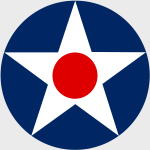Hobby Master HA7304 USN Grumman F3F-3 "Flying Barrel" Biplane Fighter - BuNo 1451, VF-6 "Shooting Stars", 6-F-15, USS Enterprise (CV-6), August 1940 (1:48 Scale)
"Nothing can stop the attack of aircraft except other aircraft."
- General Billy Mitchell
 The Grumman F3F was the last American biplane fighter aircraft delivered to the United States Navy. Designed as an improvement on the single-seat F2F, it entered service in 1936 and was retired from front line squadrons at the end of 1941.
The Grumman F3F was the last American biplane fighter aircraft delivered to the United States Navy. Designed as an improvement on the single-seat F2F, it entered service in 1936 and was retired from front line squadrons at the end of 1941.
The Navy's experience with the F2F revealed issues with stability and unfavorable spin characteristics, prompting the October 15th, 1934 contract for the improved XF3F-1, placed before F2F deliveries began. The contract also required a capability for ground attack, in addition to the design's fighter role. Powered by the same Pratt & Whitney R-1535-72 Twin Wasp Junior engine as the F2F, the fuselage was lengthened and wing area increased over the earlier design. A reduction in wheel diameter allowed greater fuselage streamlining, eliminating the prominent bulge behind the cowling of the F2F.
The prototype, BuNo. 9727, was delivered and first flown on March 20th, 1935 with company test pilot Jimmy Collins making three flights that day. Two days later, six dive-recovery flights took place; on the tenth, the aircraft's pullout at 8,000 ft (2,438 m) registered 14 g on the test equipment. The aircraft broke up in midair, crashing in a cemetery and killing Collins. A second, strengthened prototype was built, but it crashed on May 9th of the same year following the pilot's bailout during an unsuccessful spin recovery. The second prototype was rebuilt in three weeks, flying on June 20th, 1935. An order for 54 F3F-1 fighters was placed on August 24th of that year, following the conclusion of the flight test program.
Pictured here is a 1:48 scale replica of a US Navy Grumman F3F-3 "Flying Barrel" biplane fighter that was attached to VF-6 "Shooting Stars", then embarked upon the USS Enterprise during August 1940.
Sold Out!
Dimensions:
Wingspan: 8-inches
Length: 5-3/4-inches
Release Date: June 2009
 Historical Account: "Short Service" - The first production F3F-1 was delivered on January 29th, 1936, to the test group at Naval Air Station Anacostia, with squadron service beginning in March to VF-5B of the USS Ranger and VF-6B of the USS Saratoga. Marine squadron VF-4M received the last six in January 1937.
Historical Account: "Short Service" - The first production F3F-1 was delivered on January 29th, 1936, to the test group at Naval Air Station Anacostia, with squadron service beginning in March to VF-5B of the USS Ranger and VF-6B of the USS Saratoga. Marine squadron VF-4M received the last six in January 1937.
Grumman, wanting to take advantage of the powerful new 950 hp (708 kW) Wright R-1820 Cyclone supercharged radial engine, began work on the F3F-2 without a contract; the order for 81 aircraft was not placed until July 25th, 1936, two days before the type's first flight. The engine's larger diameter changed the cowling's appearance, making the aircraft look even more like a barrel, though top speed increased to 255 mph (410 km/h) at 12,000 ft (3,658 m).
The entire F3F-2 production series was delivered in between 1937 and 1938; when deliveries ended, all seven Navy and Marine Corps pursuit squadrons were equipped with Grumman single-seat fighters. Further aerodynamic developments were made to an F3F-2 returned to Grumman for maintenance; it became the XF3F-3, and featured a larger-diameter propeller, among other improvements. On June 21st, 1938, the Navy ordered 27 improved F3F-2s, as new monoplane fighters like the Brewster F2A and Grumman's own F4F Wildcat were taking longer to develop than had been planned.
With the introduction of the Brewster F2A-1, the Navy's biplane fighter days were numbered. All F3Fs were withdrawn from squadron service by the end of 1941, though 117 were assigned to naval bases and used for training and utility duties until December 1943. A few F3Fs were used by the U.S. Army Air Force as ferry-pilot trainers, under the designation UC-103.
A civilian aerobatic two-seat variant, the G-32A "Gulfhawk II," was constructed in 1938 and flown by Major Alfred "Al" Williams (Ret.), head of Gulf Oil's aviation department.








